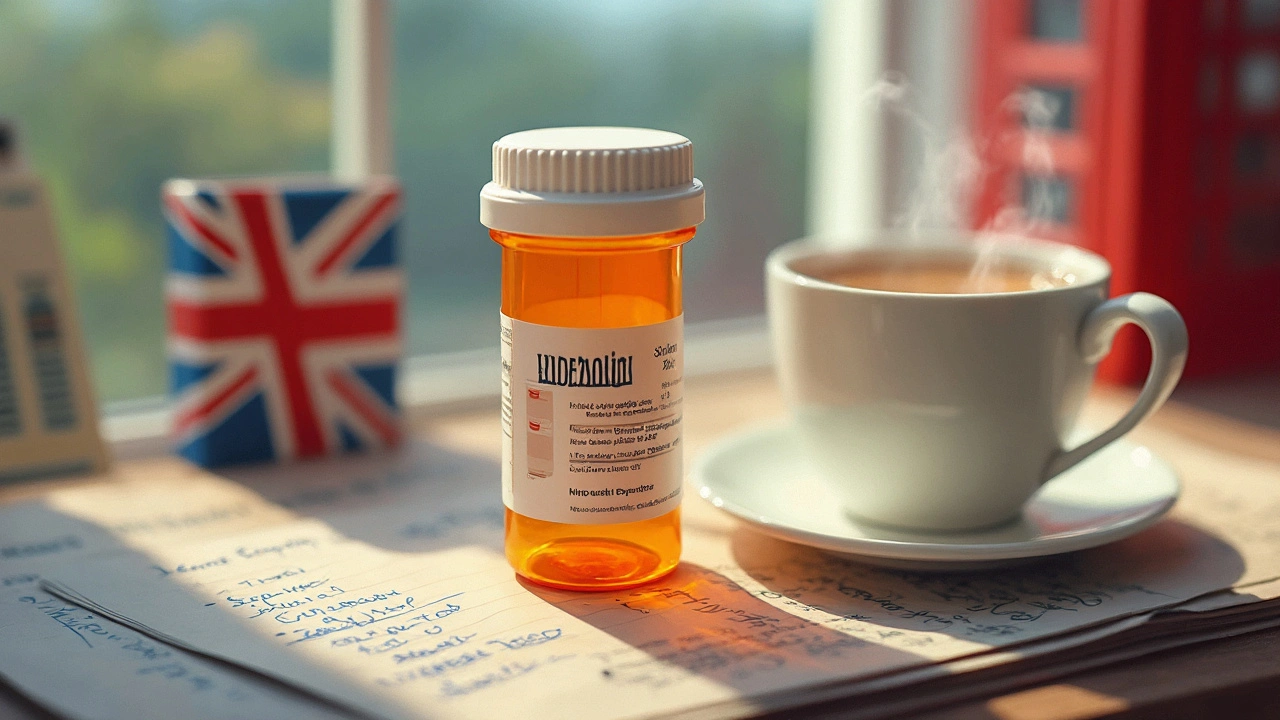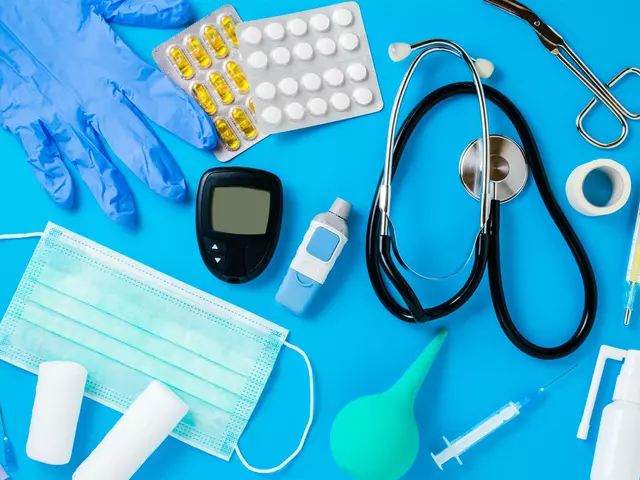When doctors reach for linezolid, it usually means they're up against bacteria that laugh in the face of regular antibiotics. This med is a go-to for serious infections like MRSA (methicillin-resistant Staph aureus) and VRE (vancomycin-resistant Enterococcus)—the kind hospitals worry about most. Linezolid steps in when other treatments just can’t cut it.
But as with every strong weapon, there’s a catch. Patients and healthcare providers both need to weigh the good and the bad before starting. For some, linezolid is a game-changer—shorter hospital stays, possible oral dosing so you can go home sooner, and fewer risks of needing a central IV. Still, you can’t jump in blind, because ignoring its side effects can spell trouble.
If you or someone you know is set to begin linezolid, getting the facts straight matters. Things like how long you’ll need it, the type of infection you’ve got, and even your other medications all play a part in making linezolid a smart move—or a risky one. It’s all about finding that sweet spot where its benefits outweigh the potential downsides.
- What Does Linezolid Do?
- When Is Linezolid the Best Choice?
- The Upsides of Using Linezolid
- The Downsides and Risks
- Practical Tips for Safe Use
What Does Linezolid Do?
If you’re dealing with an infection that just won’t quit, linezolid might be the antibiotic your doctor reaches for. It fights some of the toughest bacteria out there, including MRSA and VRE, by blocking the way these germs make the proteins they need to survive and multiply. That means it stops the infection from getting worse and gives your immune system a chance to catch up.
One of the cool things about linezolid is that it’s not only available as an IV in hospitals but also as a pill. So if your infection is under control, you can finish treatment at home, saving you a few (or more) days lying in a hospital bed.
Doctors usually pick linezolid when:
- You have a serious skin infection (think deep abscess or cellulitis) caused by bacteria that don’t respond to standard antibiotics.
- You’ve got pneumonia with superbugs like MRSA—especially those picked up in hospitals.
- You’re battling VRE, which isn’t stopped by vancomycin (another big-gun antibiotic).
Here’s a quick view of how linezolid stacks up in fighting different bacteria:
| Pathogen | Linezolid Effectiveness |
|---|---|
| MRSA | Highly Effective |
| VRE | Highly Effective |
| Streptococcus pneumoniae | Very Good |
| Most Gram-negative bacteria | Not Effective |
It’s important to know that linezolid doesn’t work against regular “garden variety” bacteria or most Gram-negatives. It’s saved for those situations where nothing else on the shelf gets the job done. That means if your doctor brings it up, your infection is pushing all the wrong buttons for typical antibiotics.
When Is Linezolid the Best Choice?
There’s a reason linezolid isn’t your average first-line antibiotic. It’s usually kept in reserve for infections that aren’t easy to beat. If your infection is caused by bacteria resistant to regular antibiotics, like MRSA or VRE, linezolid quickly moves to the top of the options list. Hospitals count on it when they’re dealing with stubborn bacteria that put patients at serious risk.
Here’s when you’re most likely to see linezolid in action:
- MRSA skin and soft tissue infections: Linezolid works well for deep or widespread skin infections when other meds fail.
- Hospital-acquired and community-acquired pneumonia: When MRSA is behind lung infections, especially in hospitalized patients where getting the right drug fast can change everything.
- VRE infections: If Enterococcus faecium or faecalis is resistant to vancomycin, linezolid is often the only pill left standing.
- Serious infections where oral options are needed: Sometimes a patient can’t stay in the hospital for IV antibiotics. Linezolid is available in both IV and tablet form, so you can finish treatment at home.
Doctors don’t pick linezolid unless it’s really necessary. Overuse can make bacteria even tougher to kill down the line, plus it’s not cheap. For regular tooth infections or urinary tract infections, you just won’t see it. The focus is on tough, resistant bugs—where the benefits most outweigh any risk.
Here’s a quick look at when hospitals reach for linezolid the most, based on recent hospital survey data:
| Type of Infection | % Treated with Linezolid |
|---|---|
| MRSA pneumonia | 62% |
| VRE bacteremia | 71% |
| Complicated skin infection | 45% |
| Uncomplicated UTI | <5% |
Tip: If your doctor suggests linezolid, ask if your infection is resistant to other antibiotics. Knowing the exact reason helps you understand your own treatment (and avoids unnecessary use).

The Upsides of Using Linezolid
When you're dealing with nasty bugs like MRSA or VRE, a regular antibiotic just won’t cut it. This is where linezolid really shines. Infections that used to mean weeks in the hospital and complicated IV therapy are now a lot easier to treat. One big win? Linezolid comes in both pill and IV form. For many patients, that means you can switch from hospital drips to taking simple tablets at home, which makes life a whole lot simpler.
Another upside is how quickly linezolid gets working in the body. It reaches high levels in the blood within a couple of hours and doesn’t need to be adjusted for people with kidney problems—something not a lot of strong antibiotics can offer. Doctors don’t have to fuss over dosing every time lab results come in, which speeds things up for everyone involved.
Here’s something a lot of folks don’t realize: linezolid actually gets into hard-to-reach spots in the body, like the lungs and bones, better than many other antibiotics. That’s a big deal for tough infections like pneumonia or bone/joint infections.
- Convenience: Can be switched from IV to pill form without losing effectiveness.
- Broad coverage: Especially good against drug-resistant Gram-positive bacteria.
- No kidney dose adjustment: Safer for people with kidney issues.
- Fewer drug monitoring headaches: No need for regular blood draws to balance the dose.
Some studies even show that patients on linezolid get out of the hospital faster and spend fewer days on IVs compared to those on other similar antibiotics, making it easier to get back to regular life. Plus, it usually doesn’t mess with your gut bacteria as much as some older drugs do, which means less chance of certain types of diarrhea or stomach issues.
| Benefit | Why It Matters |
|---|---|
| Oral & IV Options | Makes home therapy possible, shortens hospital stay |
| No Kidney Dosage Changes | Safe for those with weak kidneys |
| Good Tissue Penetration | Works for lung, bone, skin infections |
| Less Frequent Blood Tests | Reduces the hassle for patient and doctor |
Bottom line—if you’re facing an infection that’s tough to beat, linezolid gives doctors and patients more flexibility and usually gets the job done with less fuss and fewer hoops to jump through.
The Downsides and Risks
Even though linezolid can save lives, it's got a handful of side effects and hidden problems that every patient and doctor should know upfront. This isn’t your everyday antibiotic—its risks can be serious and sometimes even pop up after just a couple weeks of use.
One of the biggies is bone marrow suppression. Sounds extreme, but what it means is that your body can stop making enough cells like platelets and red blood cells. Usually, this shows up after about 10-14 days of treatment. It’s the reason doctors love to check your blood counts regularly if you’re on linezolid long term. Watch for signs like easy bruising, feeling super tired, or noticing you’re short of breath—these aren’t things you should brush off.
Another major risk is peripheral and optic neuropathy—basically, nerve damage. People sometimes notice numbness, tingling, or vision changes, and these problems could stick around, even after you stop the med if it’s not caught early. If your hands go tingly or your eyesight blurs, call your doc immediately—it’s not worth waiting to see if it goes away.
Some folks also get serotonin syndrome, which is extra tricky because it usually happens when linezolid is mixed with certain antidepressants (SSRIs, SNRIs, and others). This syndrome can bring on shivering, confusion, fever, and even seizures. If you’re taking any meds for your mood, make sure your healthcare provider knows before you start.
Here’s a snapshot of common and serious side effects seen with linezolid:
- Bone marrow suppression (anemia, low platelets, low white cell count)
- Nerve problems (tingling, numbness, vision changes)
- Serotonin syndrome (especially if you’re on antidepressants)
- Digestive issues—nausea, diarrhea
- Headache
- Skin rash (not common, but possible)
Not to mention: resistance is always a lurking issue. Overusing linezolid can lead to the rise of superbugs that don’t even blink at this strong antibiotic. That’s one more reason doctors reserve it for when nothing else will do the trick.
If you want numbers, a study from 2023 showed that about 5-10% of patients on linezolid for more than two weeks developed measurable drops in platelets, which can lead to bleeding risks. Bloodwork is your friend here, especially for longer courses.
Bottom line: linezolid is powerful, but you’ve got to respect what it can do to you—not just what it does to bacteria. Regular check-ins with your care team, telling them about new symptoms, and never mixing it with certain meds without checking first can keep you safer while you get the benefits.

Practical Tips for Safe Use
Using linezolid isn’t like popping a simple antibiotic for a sore throat. You’ve got to be precise and careful if you want the benefits without getting hammered by the downsides. Here’s what makes a real difference when you’re starting or monitoring linezolid treatment.
- Check in with your doctor often: Linezolid can mess with your blood counts, so regular blood tests matter—especially if you’re on it for more than 10 days. Watch out for signs like easy bruising, feeling extra tired, or repeated infections.
- Be honest about your meds: Tell your healthcare team about every medicine or supplement you take, even things like antidepressants or cold meds. Mixing linezolid with anything that boosts serotonin (like some SSRIs or migraine drugs) can lead to serious problems, even life-threatening serotonin syndrome. Never hide what you’re taking, even over-the-counter stuff.
- Don’t skip or double doses: Keep a strict schedule. Missing doses or taking extra won’t help you get better faster, but it can cause resistance or up your risk of side effects.
- Skip aged or fermented foods: While it sounds weird, certain foods—like aged cheeses, cured meats, soy sauce, and tap beer—can trigger high blood pressure if you’re on linezolid, thanks to how it messes with tyramine. You don’t want to end up in the ER with a splitting headache or worse.
- Watch for vision changes: If you notice blurry vision, changes in color vision, or pain in your eyes, call your doctor. Long-term linezolid use can sometimes cause optic nerve problems, and catching it early matters.
If you’re curious about how often people run into these issues, check out this breakdown from recent hospital data:
| Possible Side Effect | How Often It Happens (%) |
|---|---|
| Low platelet count | 3-10 |
| Diarrhea/Nausea | 5-15 |
| Serotonin syndrome (with interacting meds) | Less than 1 |
| Vision problems (after 28+ days) | Rare |
Bottom line? Treat linezolid with respect. Communicate, stick to the rules, and listen to your body. The rewards can be huge for the right infection, but only if you use it smartly.







Jordan Corry
April 29, 2025 AT 05:18